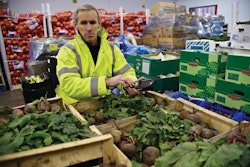Outbreaks of illness linked to imported food have risen since the late 1990s, casting a spotlight on federal inspection standards for fish, produce and other foods brought in from abroad.
The 39 outbreaks from imported food reported between 2005 and 2010 represent a small fraction of total cases of food-borne illnesses such as salmonella or E. coli, according to the data from the Centers for Disease Control and Prevention (CDC) presented Wednesday.
But the rise in imported-food outbreaks -- mostly from fish and spices -- highlights gaps in the food safety system that a sweeping new law is intended to address.
CDC researchers found 6.5 outbreaks from foreign foods a year, on average, between 2005 and 2010 -- more than double the average of 2.7 outbreaks annually between 1998 and 2004.
Of the 39 outbreaks between 2005 and 2010, nearly half -- 17 -- occurred in 2009 and 2010.
The foods, including fish, oysters, cheese, sprouts and seven other types of products, were shipped from 15 countries. Nearly 45 percent of those foods originated from Asia. Most people were sickened with salmonella or histamine fish poisoning, a bacterial disease contracted from eating spoiled dark-flesh fish that causes rashes, diarrhea, sweating, headaches and vomiting. The outbreaks led to 2,348 cases of illness, the CDC said.
Among the largest of those outbreaks was one in 2008 linked to jalapeno and serrano peppers from Mexico contaminated with salmonella. More than 1,400 people were sickened and more than 280 were hospitalized with salmonella in 43 states.
Other major outbreaks reviewed in the study were a 2007 recall of Veggie Booty, a puffed rice snack that was found to contain contaminated raw materials from China that led to 52 cases of salmonella in 17 states, and a 2010 outbreak of typhoid fever tied to frozen fruit pulp that originated in Guatemala.
The number of outbreaks reported is likely underestimated because of inconsistent country-of-origin labeling, Hannah Gould, a CDC epidemiologist and lead author of the study, said in a phone interview. "We don't always know where food comes from," Gould said.
Click here to read more on this story from the Wall Street Journal.



















